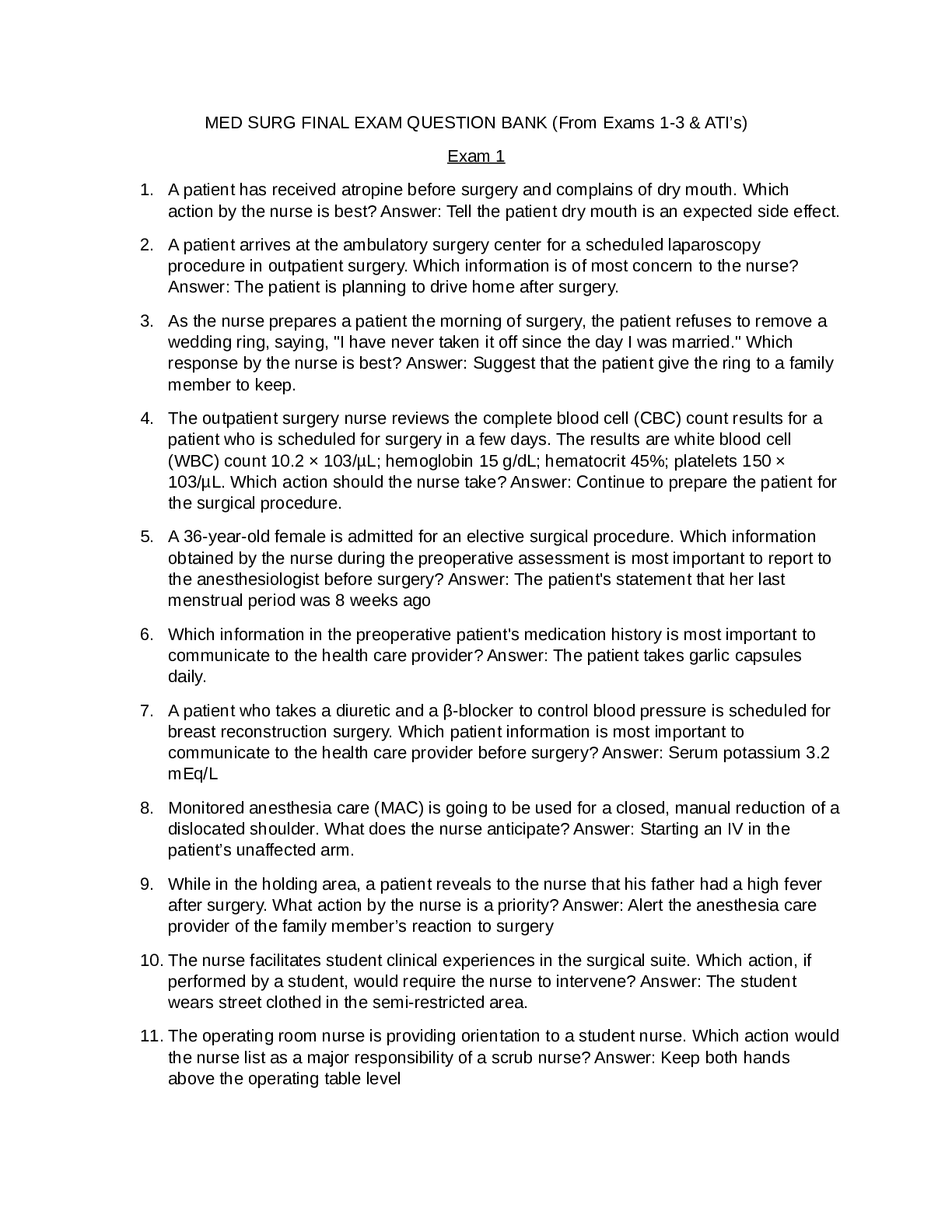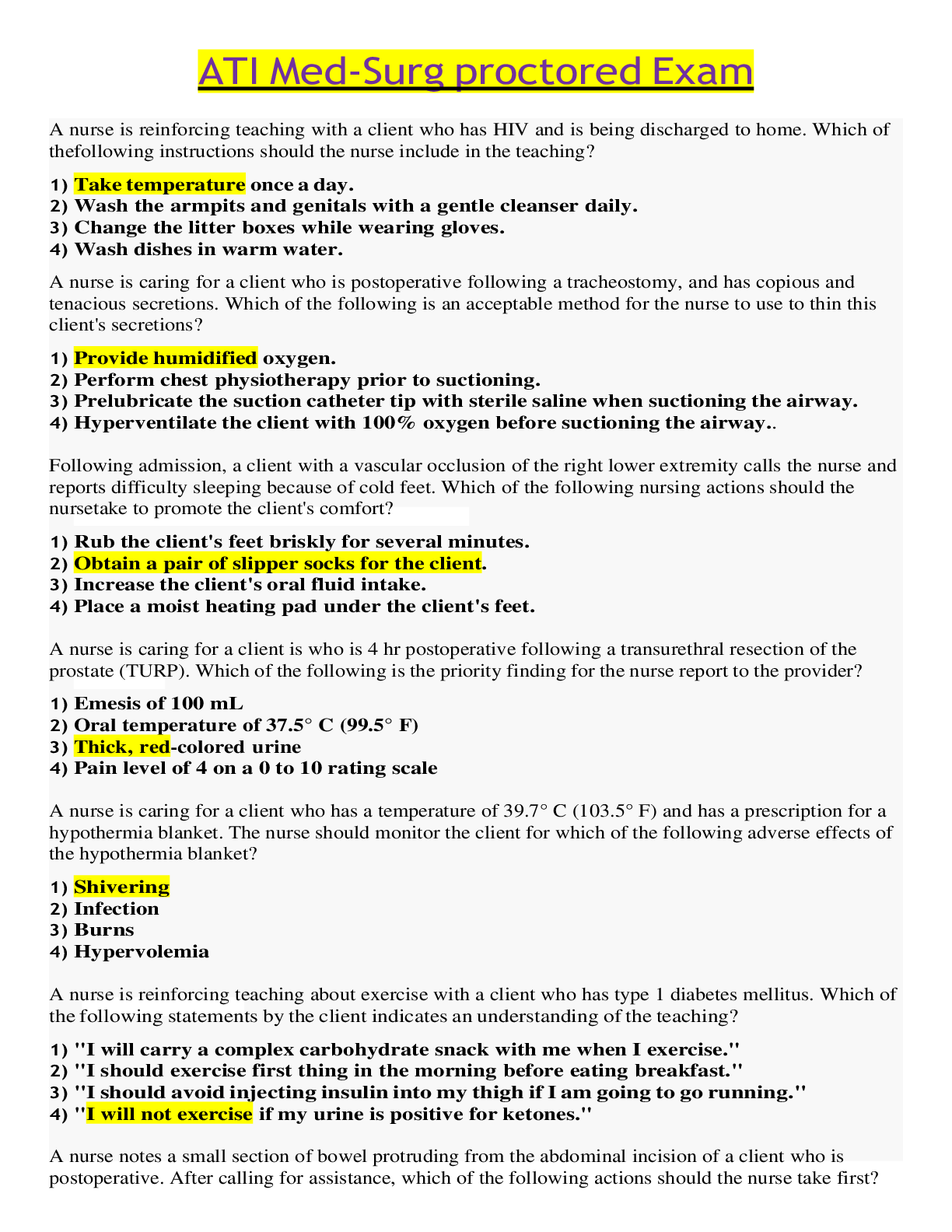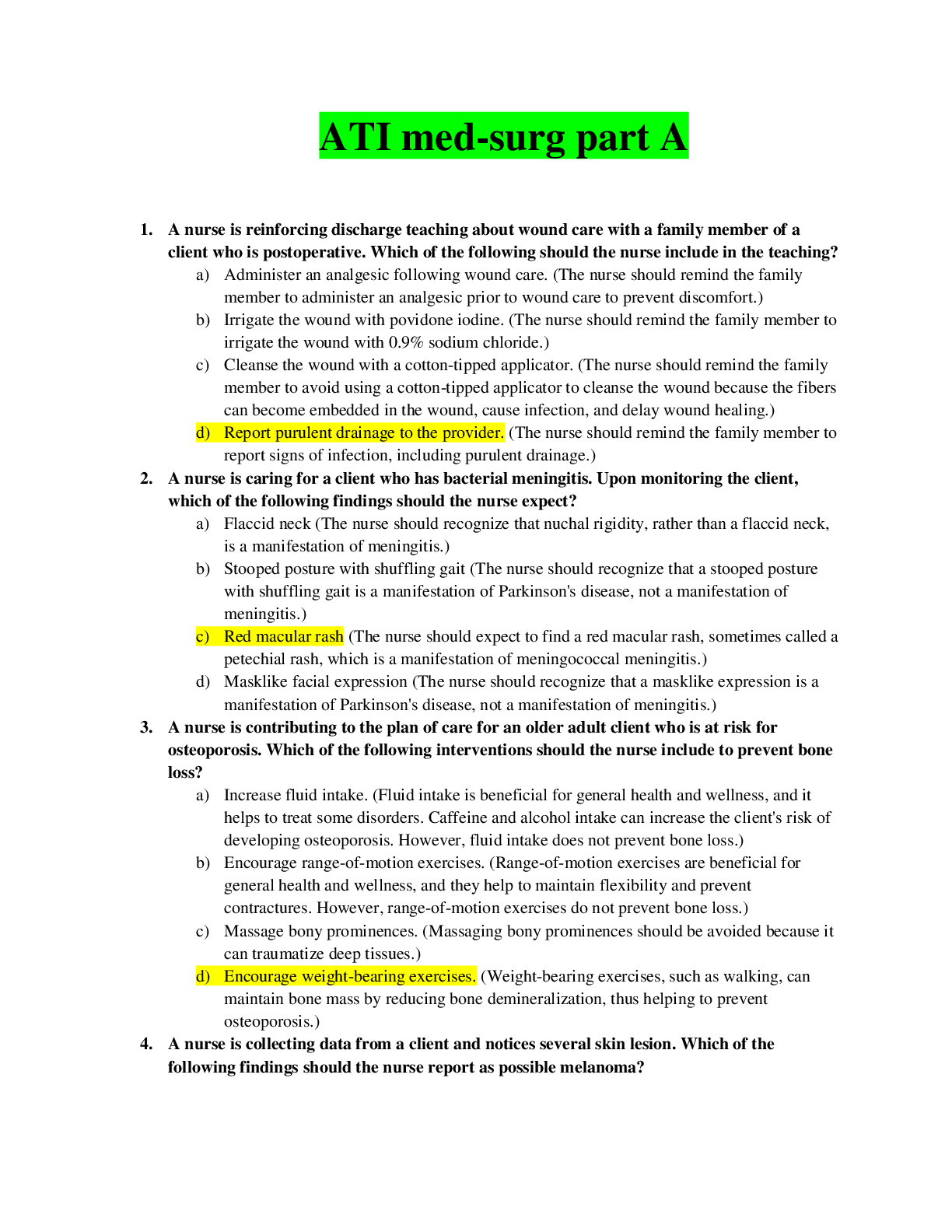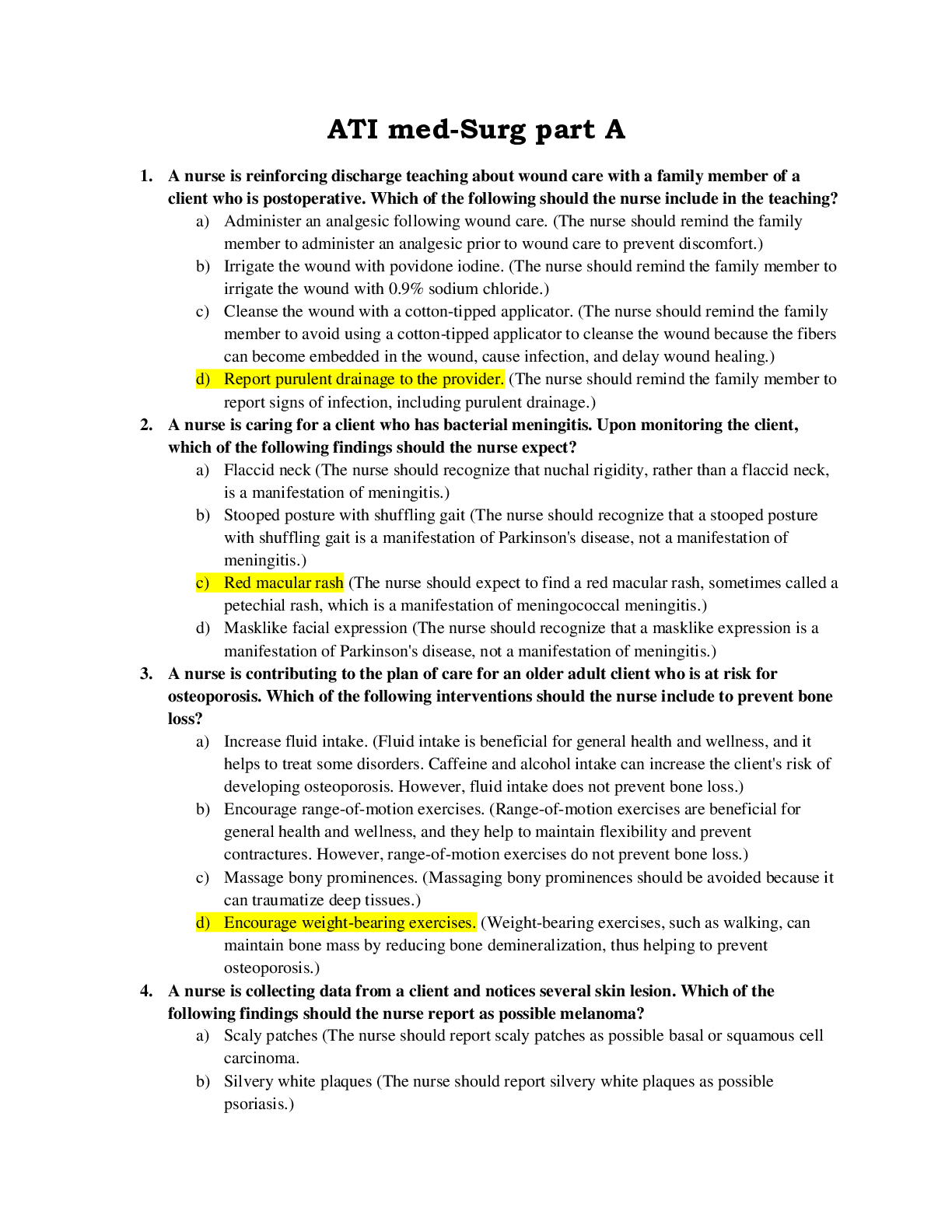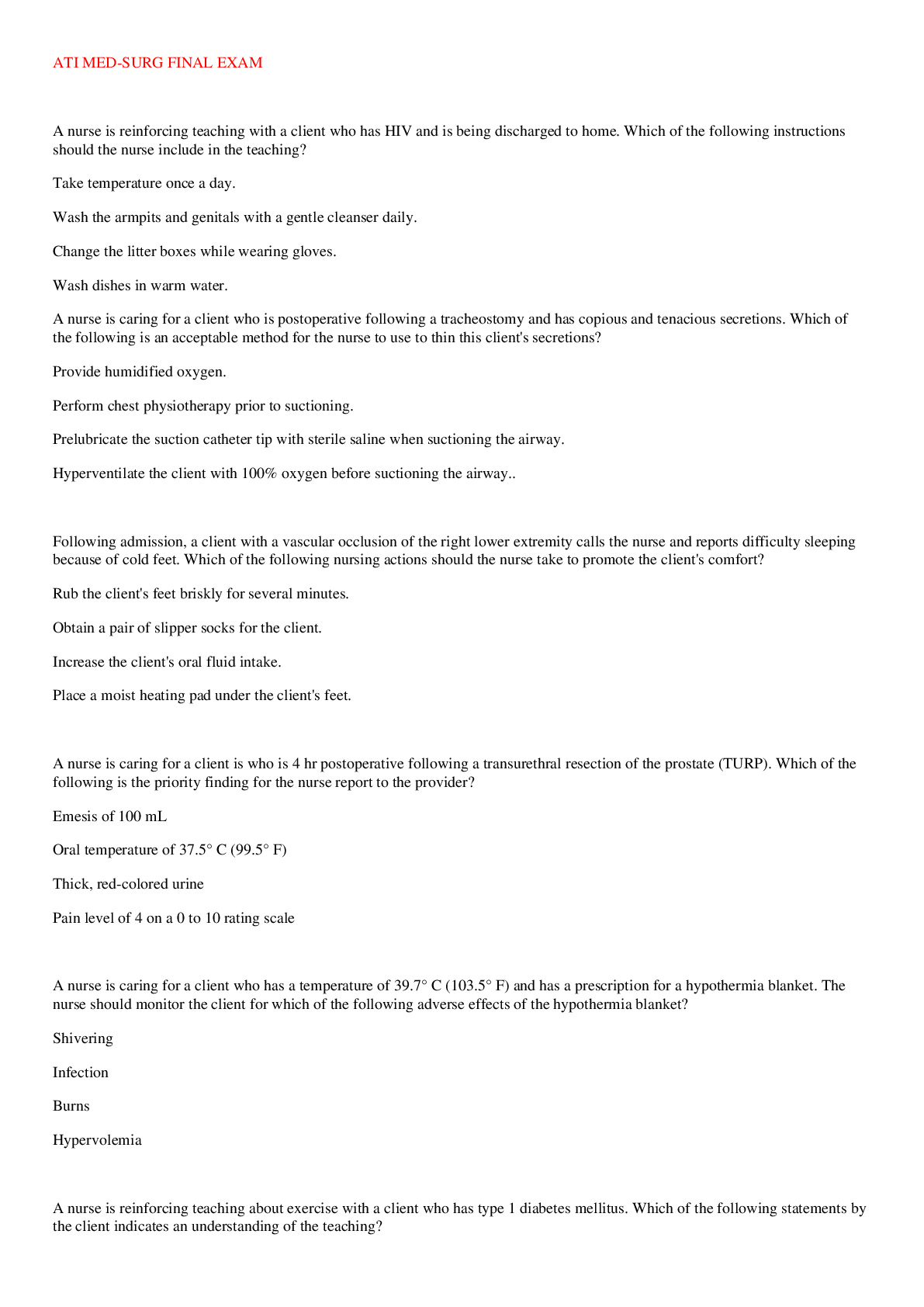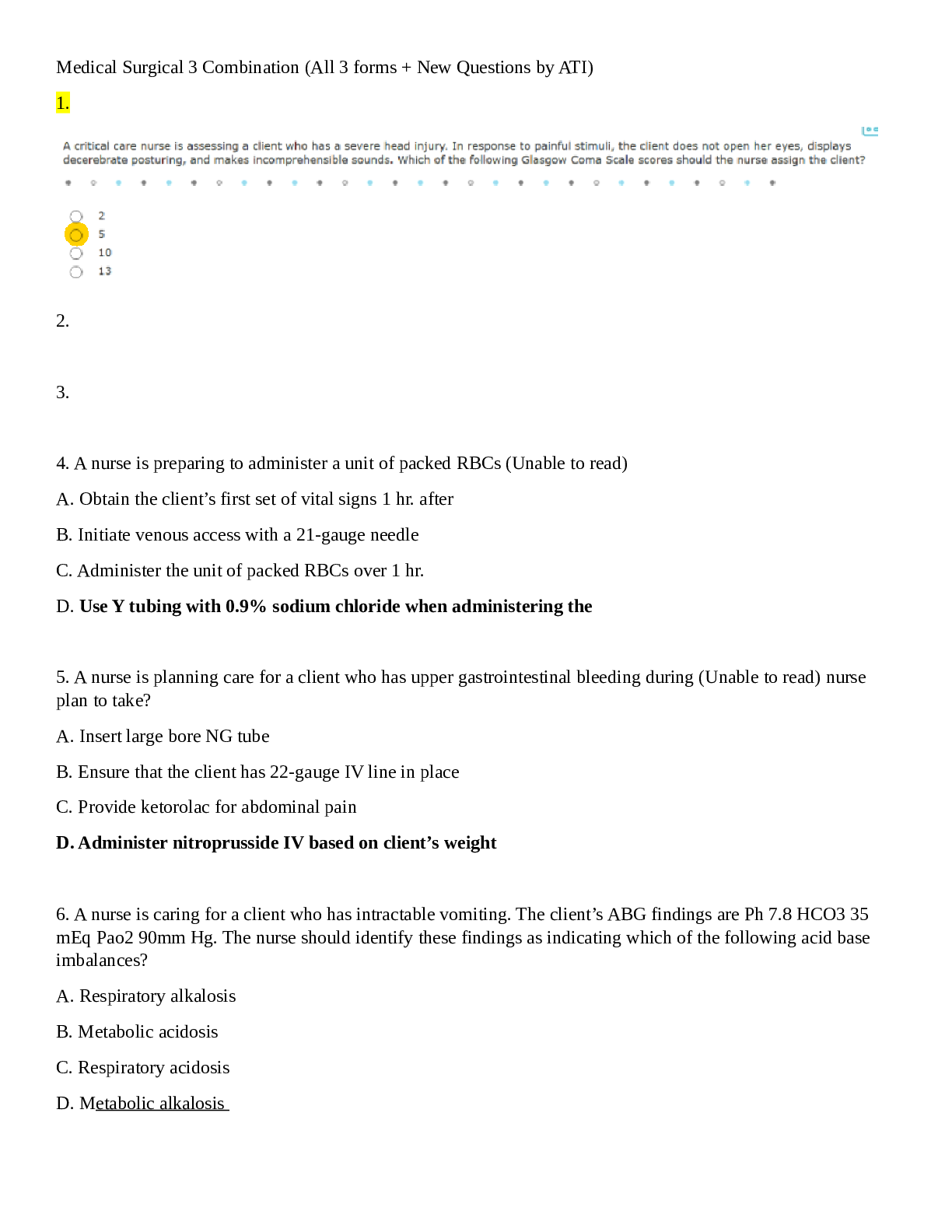*NURSING > ATI MEDICAL SURGICAL > Medical surgery ati study (All)
Medical surgery ati study
Document Content and Description Below
Medical surgery ati study • Accident/Error/Injury Prevention - (1) o Spinal Cord Injury: Care of a Client who has a Halo Device (Active Learning Template - Therapeutic Procedure, RM AMS RN 10.0 ... Chp 16) o The purpose is to provide traction and/or immobilize the spinal column Do not use the halo device to turn or move a client If the client goes home with a halo fixation device on, provide instruction on pin and vest care. Teach the client signs of infection and skin breakdown. Maintain body alignment and ensure cervical tong weights hang freely. Monitor skin integrity by providing pin care and assessing the skin under the halo fixation vest as appropriate. • Standard Precautions/Transmission-Based Precautions/Surgical Asepsis - (1) o Bacterial, Viral, Fungal, and Parasitic Infections: Isolation Precautions for Client Who Has Influenza (Active Learning Template - Basic Concept, RM FUND RN 9.0 Ch 56) Contact: Clostridium difficile, herpes simplex virus, impetigo, methicillin‑resistant Staphylococcus aureus (MRSA), vancomycin‑resistant Staphylococcus aureus (VRSA) Airborne: Measles, varicella, tuberculosis Droplet (3-6 ft): Haemophilus influenzae type B (Hib), pertussis, mumps, rubella, plague, streptococcal pneumonia, meningococcal pneumonia • Tuberculosis: Priority Action for a Client in the Emergency Department (Active Learning Template - System Disorder, RM AMS RN 10.0 Chp 23) Administer heated and humidified oxygen therapy as prescribed The client should be transported using the shortest and least busy route cough and expectorate sputum into tissues that are disposed of by the client into provided plastic bags or no‑touch receptacles Clients are no longer considered infectious after three consecutive negative sputum cultures • Adverse Effects/Contraindications/Side Effects/Interactions - (1) o Electrolyte Imbalances: Manifestations of Hypokalemia (Active Learning Template - Medication, RM AMS RN 10.0 Chp 44) VITAL SIGNS: Decreased blood pressure, thready weak pulse, orthostatic hypotension NEUROLOGIC: Altered mental status, anxiety, and lethargy that progresses to acute confusion and coma ECG: Flattened T wave, prominent U waves, ST depression, prolonged PR interval GASTROINTESTINAL: Hypoactive bowel sounds, nausea, vomiting, constipation, abdominal distention. Paralytic ileus can develop. MUSCULAR: Weakness. Deep‑tendon reflexes can be reduced. RESPIRATORY: Shallow breathing • Blood and Blood Products - (1) o Blood and Blood Product Transfusions: Steps to Administer a Blood Transfusion (Active Learning Template - Therapeutic Procedure, RM AMS RN 10.0 Chp 40) ● Verify the prescription for a specific blood product. ● Obtain consent for procedure if required. ● Obtain blood samples for compatibility determination, such as type and cross‑match. ● Assess for a history of blood‑transfusion reactions. ● Initiate large‑bore IV access. An 18‑ or 20‑gauge needle is standard for administering blood products. ● Obtain blood products from the blood bank. Inspect the blood for discoloration, excessive bubbles, or cloudiness. ● Prior to transfusion, two RNs must identify the correct blood product and client by looking at the hospital identification number (noted on the blood product) and the number identified on the client’s identification band to make sure the numbers match. ● The nurse completing the blood product verification must be one of the nurses who administers the blood product. ● Prime the blood administration set with 0.9% sodium chloride only. Never add medications to blood products. Y‑tubing with a filter is used to transfuse blood. ● Begin the transfusion, and use a blood warmer if indicated. Initiate the transfusion within 30 min of obtaining the blood product to reduce the risk of bacterial growth. • Central Venous Access Devices - (2) o Cardiovascular Diagnostic and Therapeutic Procedures: Administering Medication Through a Nontunneled Percutaneous Central Catheter (Active Learning Template - Therapeutic Procedure, RM AMS RN 10.0 Chp 27) Insertion location: subclavian vein, jugular vein; tip in the distal third of the superior vena cava Indications: Short-term use only administration of blood, long‑term administration of chemotherapeutic agents, antibiotics, and total parenteral nutrition o Cardiovascular Diagnostic and Therapeutic Procedures: Removing a Peripherally Inserted Central Catheter …………………………………………..CONTINUED……………………………………………. [Show More]
Last updated: 2 years ago
Preview 1 out of 20 pages
.png)
Buy this document to get the full access instantly
Instant Download Access after purchase
Buy NowInstant download
We Accept:

Reviews( 0 )
$12.00
Can't find what you want? Try our AI powered Search
Document information
Connected school, study & course
About the document
Uploaded On
Feb 16, 2021
Number of pages
20
Written in
Additional information
This document has been written for:
Uploaded
Feb 16, 2021
Downloads
0
Views
106


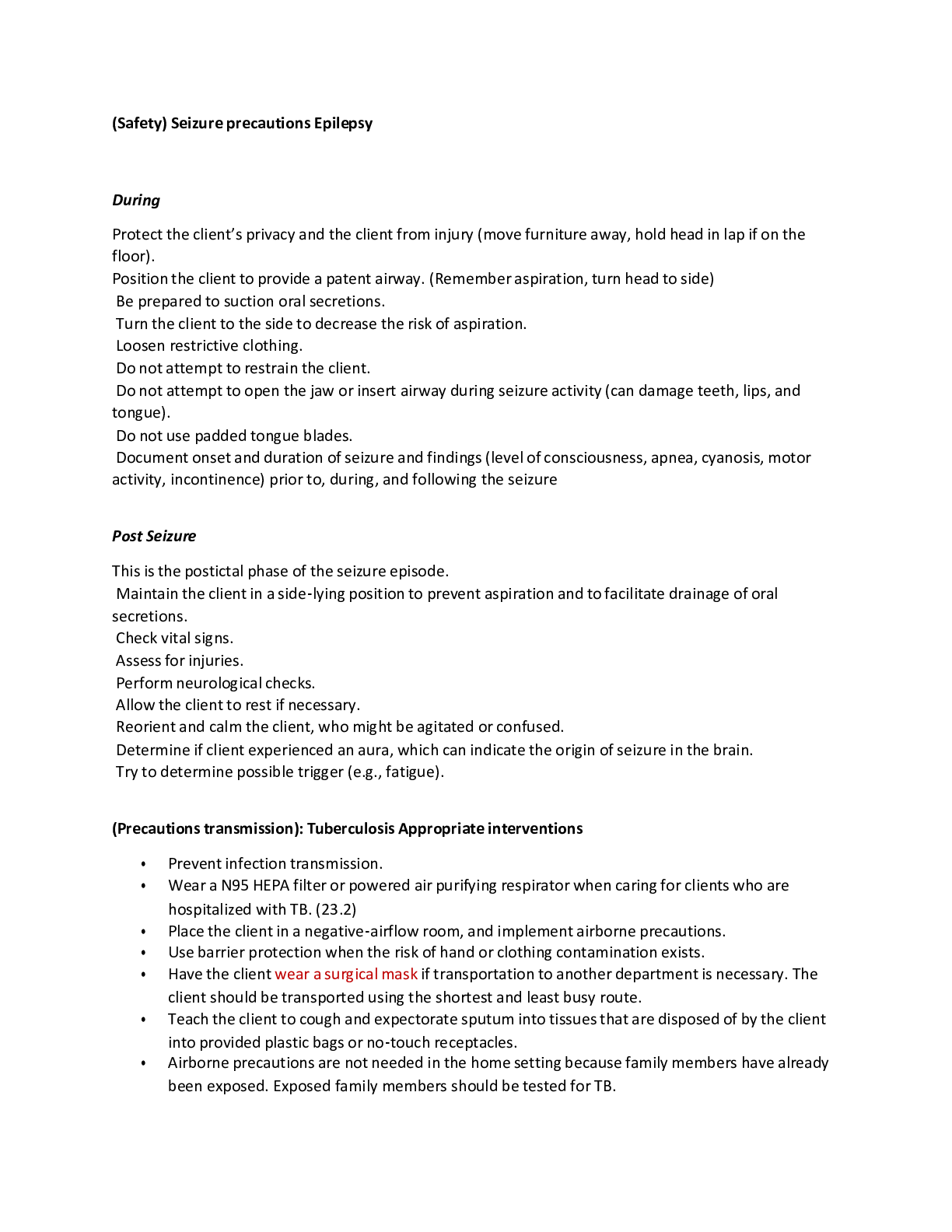



 (1).png)

